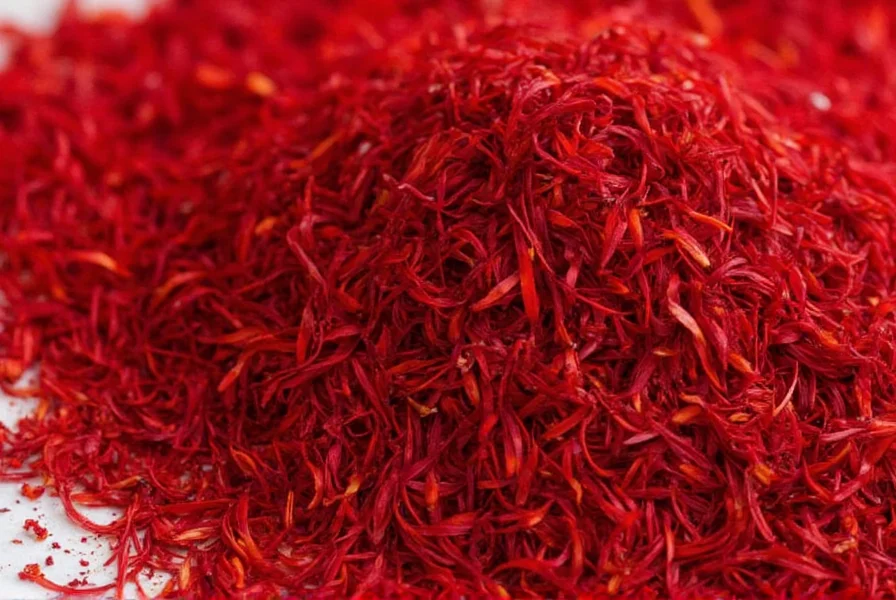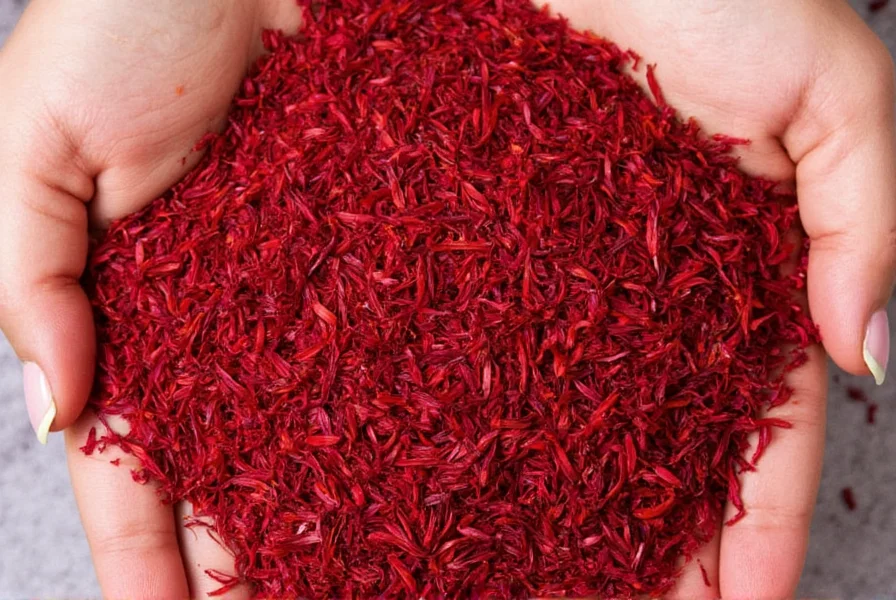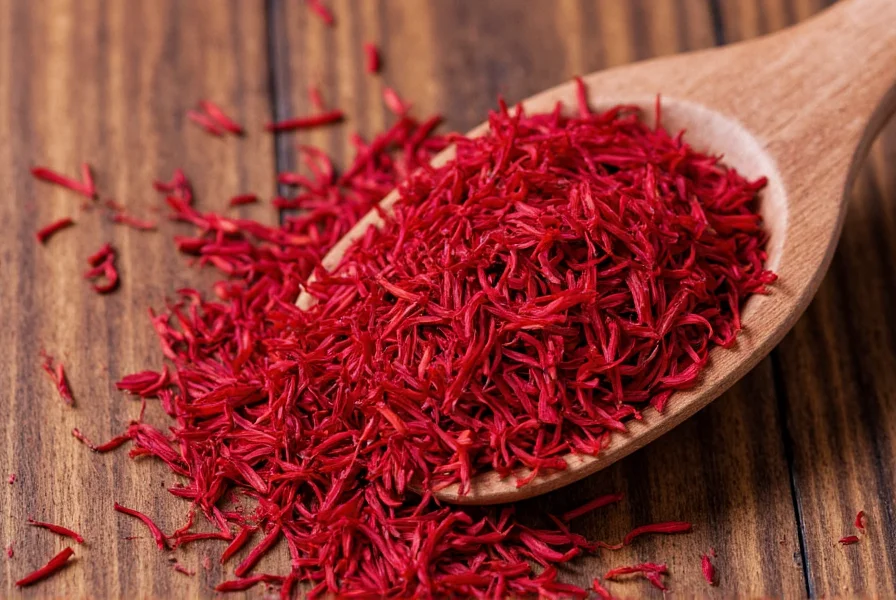Saffron's extraordinary cost isn't arbitrary—it represents centuries of meticulous cultivation practices that haven't significantly changed despite modern agricultural advances. Understanding saffron pricing requires examining the entire production chain from flower to spice jar. This comprehensive guide breaks down current market rates, quality indicators, and whether premium saffron justifies its steep price tag for culinary and medicinal applications.
Why Saffron Commands Premium Pricing
The fundamental reason behind saffron cost lies in its harvesting process. Each Crocus sativus flower produces only three stigmas, which must be hand-picked within a narrow 1-2 week autumn flowering window. Workers harvest flowers at dawn when closed, then carefully extract the delicate red threads before sunrise to preserve quality. This labor-intensive process requires approximately 400 hours of manual labor per pound of final product.
Consider these production realities that drive saffron cost:
- 75,000-250,000 flowers needed for one pound of saffron
- Harvesting must occur at precise developmental stage
- Processing requires immediate drying to prevent spoilage
- Geographic limitations restrict cultivation to specific regions
- Authentic saffron cannot be mechanized due to flower fragility
| Quality Grade | Price Per Gram | Price Per Ounce | Price Per Pound |
|---|---|---|---|
| Premium (ISO 3632 Category I) | $15-$22 | $425-$625 | $5,000-$7,000 |
| Standard (ISO 3632 Category II) | $8-$14 | $225-$400 | $2,700-$4,800 |
| Commercial Grade | $3-$7 | $85-$200 | $1,000-$2,400 |
| Suspect/Adulterated | Under $2.50 | Under $70 | Under $850 |
Factors Influencing Saffron Cost Variability
Not all saffron carries identical pricing. Several critical factors create significant price differentiation in the current saffron market:
Quality Certification Standards
The ISO 3632 standard provides objective measurement of saffron quality through crocin (color), picrocrocin (taste), and safranal (aroma) content. Category I saffron with crocin levels above 190 commands premium pricing, while lower-grade products fall significantly in cost. Reputable suppliers provide laboratory certification—absence of these documents should raise suspicion about authentic saffron cost per gram.
Geographic Origin Impact
Iran produces approximately 90% of the world's saffron, with Spanish and Kashmiri varieties commanding 20-50% premiums due to perceived quality differences. While Iranian saffron often offers better value, Spanish "Coupe" grade and Kashmiri Mongra maintain higher price points due to branding and historical reputation.

Harvest Timing and Processing Methods
Saffron harvested during the first flowering cycle (typically late October) contains higher concentrations of active compounds, justifying premium pricing. Traditional sun-drying methods versus modern dehydrators also affect final quality and cost. Artisanal producers using time-intensive techniques often charge 30-40% more than industrial operations.
Evaluating Saffron Value: Is Premium Pricing Justified?
When assessing whether expensive saffron warrants its cost, consider these practical factors:
Color Strength Measurement
Genuine premium saffron should yield intense yellow-orange color in warm water within 15 minutes. Perform this simple test: place 5-10 threads in 2 tablespoons of warm water. Authentic saffron gradually colors the liquid while maintaining thread integrity. Immediate intense coloring suggests artificial coloring—a common issue with suspiciously cheap saffron cost offerings.
Actual Usage Economics
Despite the high saffron cost per pound, actual culinary usage makes it economical per serving. A single gram (approximately 400 threads) yields 30-40 servings in traditional recipes. When calculated per dish, premium saffron costs only $0.25-$0.50 per serving—comparable to other specialty spices when used properly.
Shelf Life Considerations
Properly stored saffron maintains potency for 2-3 years, unlike many spices that degrade within months. This extended usability improves long-term value. Store saffron in airtight containers away from light and moisture to preserve quality and maximize return on investment.

Common Saffron Pricing Misconceptions
Several myths persist about saffron cost that mislead consumers:
- "All saffron is essentially the same price": Quality variations create legitimate 300% price differences between authentic products
- "Lower prices indicate better deals": Saffron costing less than $3/gram is almost certainly adulterated
- "Organic certification significantly increases cost": Organic saffron typically costs only 10-15% more than conventional
- "Bulk purchases always save money": Saffron degrades over time, making large purchases uneconomical for most households
Making Informed Saffron Purchases
When evaluating saffron cost, prioritize these verification steps:
- Check for ISO 3632 certification documentation
- Examine thread appearance—premium saffron shows uniform red color with minimal yellow styles
- Verify supplier transparency about origin and harvest date
- Perform the water test before committing to large purchases
- Compare price per actual culinary serving rather than per weight
Understanding these elements transforms saffron cost from a confusing expense into a calculated investment in quality ingredients. The premium price reflects genuine production realities rather than arbitrary markup, making informed purchasing essential for obtaining authentic saffron's distinctive flavor and potential health benefits.
Frequently Asked Questions
Why does saffron cost significantly more than other spices?
Saffron costs more due to its extremely labor-intensive harvesting process. It takes 75,000-250,000 crocus flowers to produce just one pound of saffron, with each of the three stigmas per flower hand-picked at dawn during a brief flowering season. This requires approximately 400 hours of manual labor per pound, with no viable mechanization possible due to the flower's fragility.
How much does real saffron cost per gram in 2024?
Authentic saffron costs $8-$22 per gram depending on quality. Premium ISO 3632 Category I saffron ranges from $15-$22 per gram, standard grade costs $8-$14 per gram, while commercial grade falls between $3-$7 per gram. Saffron priced below $2.50 per gram is likely adulterated or significantly lower quality.
Is expensive saffron worth the higher cost?
Premium saffron is worth the investment when used properly. A single gram yields 30-40 servings in traditional recipes, making the cost per serving only $0.25-$0.50. Higher quality saffron provides stronger flavor, better color, and greater potency of active compounds. The water test (threads gradually coloring warm water while maintaining integrity) helps verify if premium pricing is justified by actual quality.
What factors cause saffron price variations between suppliers?
Saffron price variations stem from quality certification (ISO 3632 grades), geographic origin (Spanish and Kashmiri command 20-50% premiums over Iranian), harvest timing (first flowering cycle yields higher quality), processing methods (traditional vs. industrial), and transparency documentation. Legitimate price differences can reach 300% between authentic products of varying quality, not including adulterated products sold at suspiciously low prices.
How can I verify if saffron pricing is legitimate?
Verify saffron legitimacy by checking for ISO 3632 certification documentation, examining thread appearance (uniform red color with minimal yellow styles), confirming harvest date and origin transparency, performing the water test (gradual coloring over 15 minutes while threads remain intact), and comparing price per culinary serving rather than per weight. Be wary of prices below $3/gram, which typically indicate adulteration.











 浙公网安备
33010002000092号
浙公网安备
33010002000092号 浙B2-20120091-4
浙B2-20120091-4